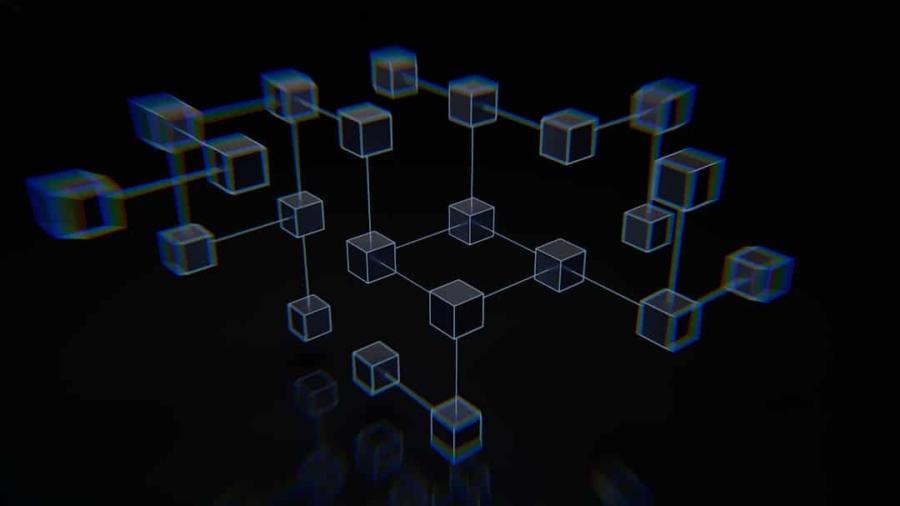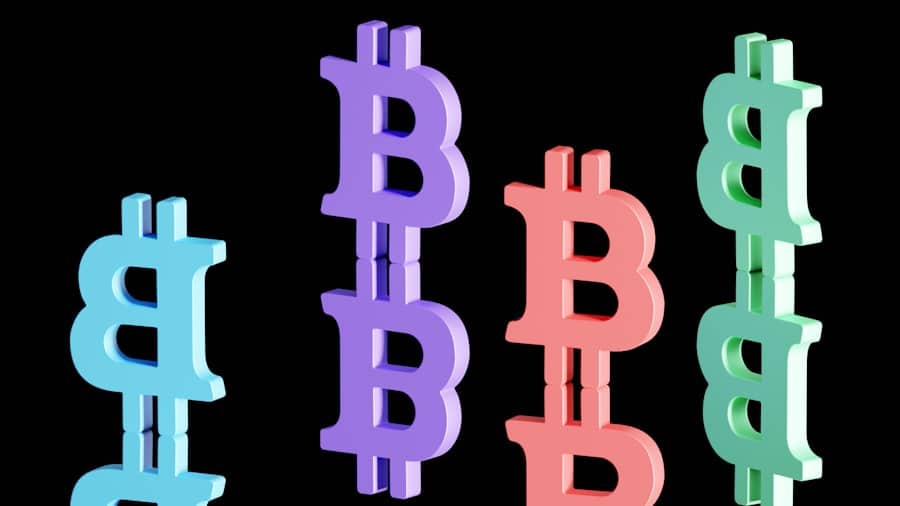The emergence of blockchain technology has revolutionized various sectors, with finance being one of the most significantly impacted. Initially, blockchains operated in silos, each serving specific purposes and lacking the ability to communicate with one another. However, as the demand for seamless transactions and data sharing has grown, the concept of interoperable blockchains has gained traction.
Interoperability refers to the ability of different blockchain networks to interact and exchange information without friction. This capability is becoming increasingly vital in a globalized economy where financial institutions require real-time access to data across multiple platforms. The rise of interoperable blockchains is driven by several factors, including the need for efficiency, cost reduction, and enhanced security.
Financial institutions are recognizing that isolated blockchains can lead to inefficiencies, such as duplicated efforts and increased transaction times. By enabling different blockchains to work together, organizations can streamline processes, reduce operational costs, and improve customer experiences. For instance, projects like Polkadot and Cosmos are pioneering interoperability solutions that allow various blockchains to communicate and share data seamlessly.
These innovations are not only transforming how financial transactions are conducted but are also setting the stage for a more integrated global financial ecosystem.
Key Takeaways
- Interoperable blockchains are on the rise in global finance, allowing different blockchain networks to seamlessly communicate and transact with each other.
- Financial institutions can benefit from interoperable blockchains by reducing transaction costs, increasing transaction speed, and improving transparency and security.
- Overcoming challenges in achieving interoperability in blockchains requires standardization of protocols, consensus mechanisms, and governance models.
- Regulations play a crucial role in shaping interoperable blockchains by providing legal clarity, ensuring compliance, and fostering trust among stakeholders.
- Interoperable blockchains have the potential to revolutionize cross-border transactions by enabling seamless and efficient transfer of value across different networks.
The Benefits of Interoperable Blockchains for Financial Institutions
Interoperable blockchains offer a multitude of benefits for financial institutions, fundamentally altering how they operate and interact with one another. One of the most significant advantages is the enhancement of transaction speed and efficiency. Traditional banking systems often involve multiple intermediaries, leading to delays and increased costs.
With interoperable blockchains, transactions can be executed in real-time across different networks, significantly reducing settlement times from days to mere minutes or even seconds. This rapid processing capability is particularly beneficial for cross-border transactions, where time-sensitive operations are crucial. Moreover, interoperability fosters innovation within financial services.
By allowing different blockchain networks to collaborate, institutions can leverage unique features and functionalities from various platforms. For example, a bank could utilize a blockchain that specializes in smart contracts while simultaneously accessing another that excels in secure identity verification. This collaborative approach not only enhances service offerings but also encourages the development of new financial products tailored to meet diverse customer needs.
Additionally, the ability to share data across networks can lead to improved risk management and compliance processes, as institutions can access a broader range of information to make informed decisions.
Overcoming Challenges in Achieving Interoperability in Blockchains
Despite the promising potential of interoperable blockchains, several challenges must be addressed to realize their full capabilities. One of the primary obstacles is the lack of standardized protocols across different blockchain networks. Each blockchain may have its own set of rules and technical specifications, making it difficult for them to communicate effectively.
To overcome this challenge, industry stakeholders must collaborate to establish common protocols that facilitate seamless communication between diverse blockchain systems. Another significant hurdle is the issue of security and trust.
As multiple blockchains interact with one another, the risk of vulnerabilities increases. A breach in one network could potentially compromise the integrity of others connected to it. Therefore, ensuring robust security measures is paramount in achieving interoperability.
Solutions such as cross-chain atomic swaps and decentralized oracles are being explored to enhance security while enabling interoperability. These technologies aim to create secure bridges between blockchains, allowing for safe data exchange without exposing networks to undue risks.
The Role of Regulations in Shaping Interoperable Blockchains
Regulatory frameworks play a crucial role in shaping the landscape of interoperable blockchains within the financial sector. As governments and regulatory bodies begin to recognize the potential benefits of blockchain technology, they are also tasked with ensuring consumer protection and maintaining market integrity. Regulations can either facilitate or hinder the development of interoperable solutions depending on how they are structured.
For instance, clear guidelines on data privacy and security can encourage financial institutions to adopt interoperable blockchains by providing a framework within which they can operate confidently. Moreover, regulations can help establish trust among users and stakeholders in the financial ecosystem. By setting standards for compliance and operational practices, regulators can mitigate concerns related to fraud and misuse of technology.
This trust is essential for widespread adoption; financial institutions are more likely to invest in interoperable solutions if they feel assured that they are operating within a secure and regulated environment. As countries around the world continue to develop their regulatory approaches to blockchain technology, the impact on interoperability will be significant, influencing how quickly and effectively these systems can be integrated into existing financial infrastructures.
Interoperable Blockchains and Cross-Border Transactions
Cross-border transactions have long been plagued by inefficiencies stemming from currency conversion fees, lengthy processing times, and regulatory hurdles. Interoperable blockchains present a transformative solution to these challenges by enabling direct transactions between parties across different jurisdictions without the need for intermediaries such as correspondent banks. This capability not only reduces costs but also enhances transaction speed, making it possible for funds to be transferred almost instantaneously regardless of geographical barriers.
For example, Ripple’s XRP Ledger is designed specifically for cross-border payments, allowing financial institutions to settle transactions in real-time using its native cryptocurrency, XRP. By leveraging an interoperable blockchain framework, Ripple facilitates seamless currency exchanges between different fiat currencies while minimizing transaction fees. This model has attracted numerous banks and payment providers seeking to optimize their cross-border payment processes.
As more institutions adopt interoperable solutions for international transactions, we can expect a significant shift in how global finance operates, leading to a more efficient and accessible system for individuals and businesses alike.
The Potential Impact of Interoperable Blockchains on Financial Inclusion
Interoperable blockchains hold immense potential for advancing financial inclusion worldwide. In many developing regions, access to traditional banking services remains limited due to infrastructural challenges and high costs associated with establishing physical branches. By utilizing interoperable blockchain technology, financial services can be delivered more efficiently and at a lower cost, reaching underserved populations who may not have had access to banking facilities previously.
For instance, mobile money platforms like M-Pesa have demonstrated how digital financial services can empower individuals in regions with limited banking infrastructure. By integrating interoperable blockchain solutions into such platforms, users could benefit from enhanced security, lower transaction fees, and access to a broader range of financial products such as loans or insurance services. Furthermore, interoperability allows for better identity verification processes through decentralized identity solutions, enabling individuals without formal identification documents to participate in the financial system securely.
The Future of Interoperable Blockchains in Traditional Banking Systems
As traditional banking systems evolve in response to technological advancements, interoperable blockchains are poised to play a pivotal role in shaping their future landscape. Banks are increasingly recognizing the need to adapt their operations to remain competitive in an environment where fintech companies are rapidly innovating and capturing market share. By embracing interoperable blockchain solutions, banks can enhance their service offerings while improving operational efficiency.
The integration of interoperable blockchains into traditional banking systems could lead to a paradigm shift in how banks manage their internal processes as well as their interactions with customers and other financial institutions. For example, banks could utilize smart contracts on interoperable platforms to automate various processes such as loan approvals or compliance checks, significantly reducing manual intervention and associated costs. Additionally, by collaborating with other banks through interoperable networks, institutions can share resources and information more effectively, fostering a collaborative ecosystem that benefits all participants.
Innovations and Developments in Interoperable Blockchains
The field of interoperable blockchains is witnessing rapid innovations that promise to enhance their functionality and adoption across various sectors.
Projects like Chainlink’s Cross-Chain Interoperability Protocol (CCIP) aim to create a universal standard for connecting different blockchains while ensuring data integrity.
Furthermore, advancements in decentralized finance (DeFi) are driving interest in interoperability as users seek seamless access to various financial services across multiple platforms. DeFi protocols that prioritize interoperability enable users to move assets freely between different ecosystems while taking advantage of unique features offered by each platform. This trend is likely to accelerate as more developers recognize the importance of creating interconnected systems that enhance user experience and broaden access to financial services.
In conclusion, the rise of interoperable blockchains represents a significant evolution in global finance, offering numerous benefits for financial institutions while addressing longstanding challenges related to efficiency and accessibility. As regulatory frameworks evolve and technological innovations continue to emerge, the future of interoperable blockchains appears promising—potentially reshaping traditional banking systems and fostering greater financial inclusion worldwide.
In a recent article discussing the future of interoperable blockchains in global finance, it is important to consider the technological tools that will enable this innovation. Architects looking for the best laptop to support their design work may find this article helpful in making an informed decision. Additionally, those in the architecture field may benefit from exploring the best software for house plans to streamline their workflow. For professionals seeking efficient ways to record important meetings or discussions, discovering the best free software for voice recording could be a game-changer. By leveraging these technological resources, architects and other professionals can stay ahead of the curve in an increasingly digital world.
FAQs
What are interoperable blockchains?
Interoperable blockchains are different blockchain networks that are able to communicate and share data with each other, allowing for seamless transfer of assets and information across multiple platforms.
How are interoperable blockchains relevant to global finance?
Interoperable blockchains are relevant to global finance as they have the potential to streamline and improve cross-border transactions, reduce costs, and increase efficiency in the financial industry.
What are the benefits of interoperable blockchains in global finance?
The benefits of interoperable blockchains in global finance include improved transparency, reduced settlement times, lower transaction costs, and increased accessibility to financial services for individuals and businesses worldwide.
What are some challenges in implementing interoperable blockchains in global finance?
Challenges in implementing interoperable blockchains in global finance include regulatory compliance, security concerns, scalability issues, and the need for industry-wide collaboration and standardization.
What are some examples of interoperable blockchain projects in global finance?
Examples of interoperable blockchain projects in global finance include Ripple’s Interledger Protocol, Cosmos Network, Polkadot, and Ethereum 2.0, all of which aim to facilitate interoperability between different blockchain networks.



